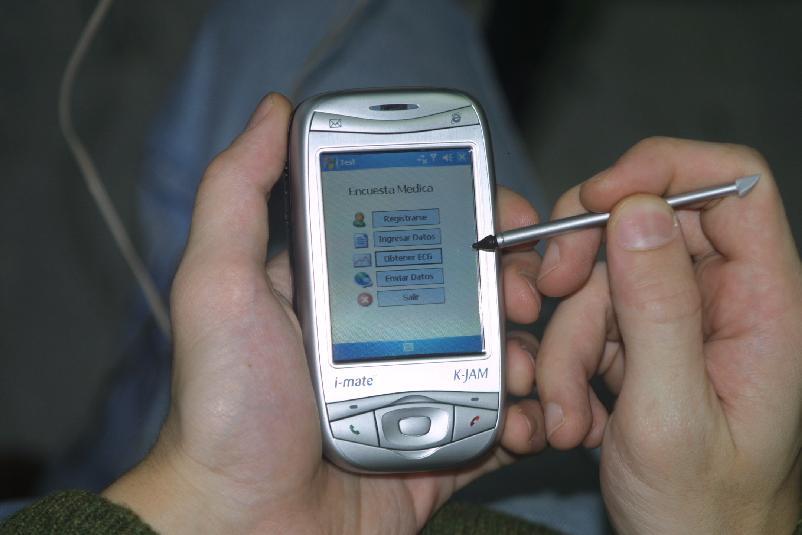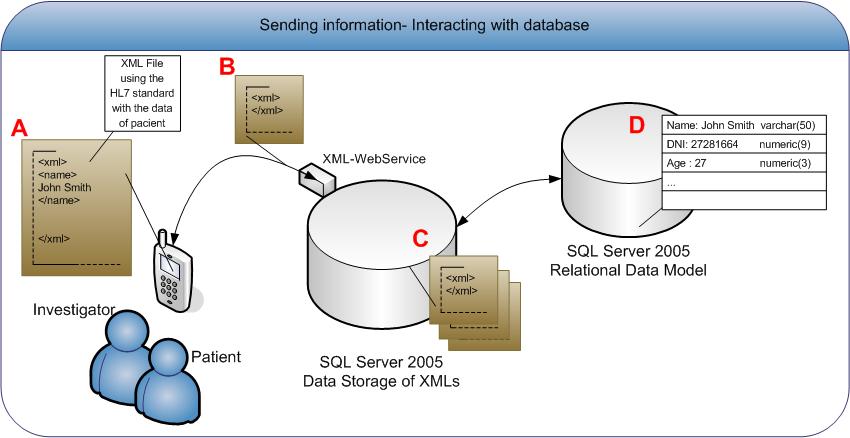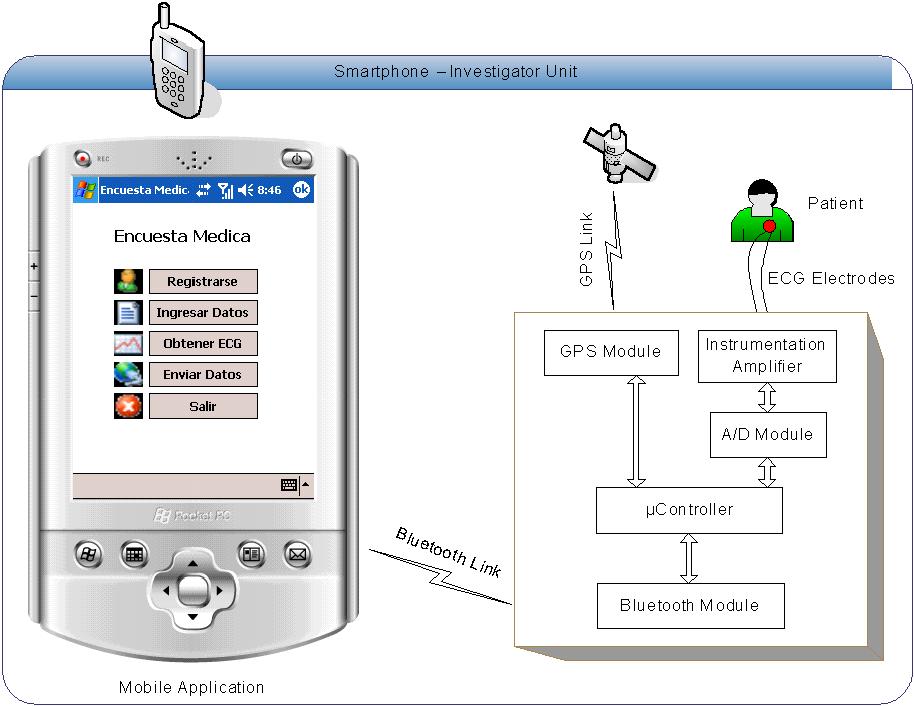Digital Inclusion in Health and Higher Education (DIKAHE)
|
|
Life Sciences DIKAHEDigital Inclusion Kit in Health and Higer Education expand the frontiers of computing technology in health and higher edlucation with the general goal of promoting research and development in Latin America. In Telemedicine (TM), we aim to reach underserved zones, rural and urban, with mobile technology (DITRK), which allows data acquisition of pati aents unable to assist to specialized medical centers. Mobile devices with portable acquisition systems, such as ECG or arterial blood pressure, allows the building of a clinic database for use in preventive medicine (cardiovascular diseases, diabetes and cancer). As a backbone, a Virtual Cluster (VC) is constructed, sharing all patient data between educational and research communities.
Clinic Database stores patient information related to health status, cardiovascular risks through measurable variables such as: arterial pressure, congenital illness treatments, diet, ECG’s, medical images. Geographical region is taken into account for analysis of regional deceases and prevention policies. This information is available for physicians consultation and for statistics. Database access is through web services and mobile system including GPRS. Patient information exchange and data base model interaction follows: A. An xml with patient data is generated in the smart device using the HL7 standard. B. The xml is sent via web service (with a security model). C. The transaction is stored storing the xml in the SQL Server 2005. D. Later, the xml is processed and patient data is incorporated in the predefined relational model. ? HL7 is an international community of healthcare experts and information scientists collaborating to create standards for electronic healthcare information (www.hl7.org). Handheld device: The handheld device is used by a physician to gather patient’s information in situ through a specially developed application running on a mobile phone (Windows mobile); information such as personal data will be incorporated to his/her medical record. An ECG module connected to the handheld device, using a bluetooth interface, will permit the acquisition of an ECG, later to be stored into patient’s medical record. If GSM or GPRS services are available in situ, the collected records are sent to the main database server; if this is not the case, the records are temporarily stored in the handheld device and later sent to the server. Related projectMicrosoft RFP 2007, Project “Digital inclusion: Mobile Technology in Health Care”. Directors: Marcelo Risk and Guillermo Marshall, (LSC), Dto. de Computación, FCEyN, UBA. Microsoft RFP 2006, Digital Inclusion kit in health and higher education. Directors: Marcelo Risk and Guillermo Marshall, (LSC), Dto. de Computación, FCEyN, UBA. Publications:Digital Inclusion Kit in health and higher education. Soba .A, Panelli,A, Perez Rodriguez M, Risk, M, Suarez, J.P, Marshall, G. MVD TELCOM 2006, I Exposición Internacional de las Telecomunicaciones, Uruguay, 2006.
Contacto: Departamento de Computación - Facultad de Ciencias Exactas y Naturales - Universidad de Buenos Aires
|









